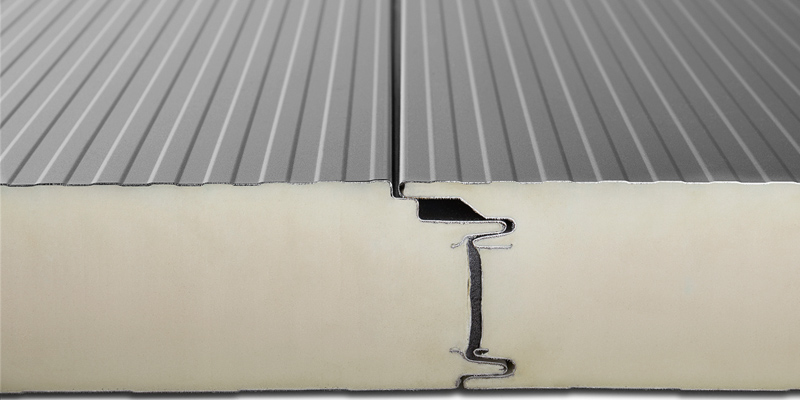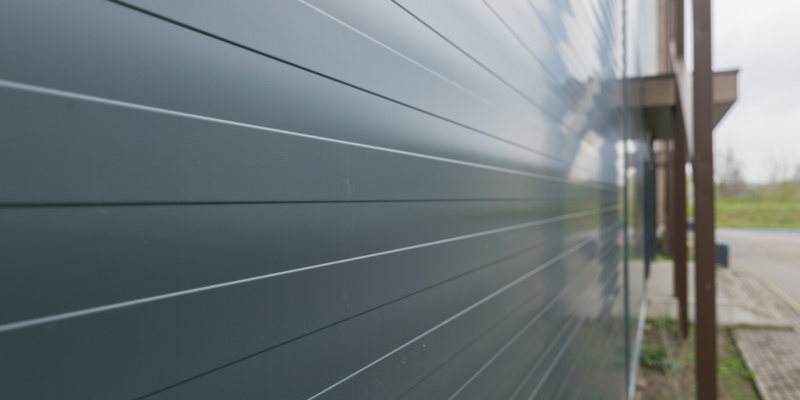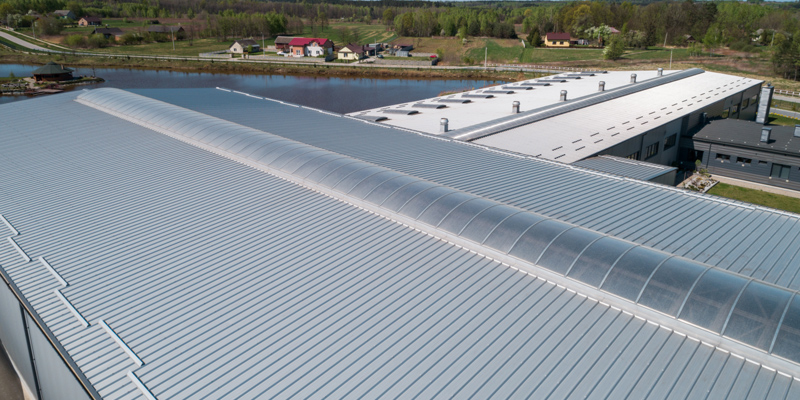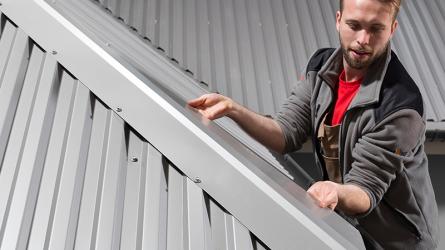Sandwich panels – what should you know?
- Details
How much do they cost, what is the best way to install them, and where are they the cheapest? A short introductory guide to thermal insulation sandwich panels.
Sandwich panels – what should you know?
What is a sandwich panel?
A sandwich panel is a product used to clad the walls and roofs of buildings. Each panel comprises a core of thermoinsulating material, skinned on both sides with sheet metal. Sandwich panels are not structural materials but curtain materials. The structural forces are carried by the steel framework or other carrier frame to which the sandwich panels are attached.
The types of sandwich panel are generally grouped by the thermoinsulating material used as the core. Sandwich panels with cores of EPS (expanded polystyrene), mineral wool and polyurethane (PIR, or polyisocyanurate) are all readily available.
The materials mainly vary in their thermal insulating performance, sound insulating performance, reaction to fire and weight.
Why use sandwich panels anyway?
Sandwich panels are widely acclaimed due to a number of benefits, mainly those related to cost. Comparisons between frame or stud partition technology (frames lined with sandwich panels) and traditional building technologies based on masonry walls reveal advantages of sandwich panels in three key areas:
1. Direct costs
Construction of a building in either technology requires similar capital expenditure levels.
The comparison in this area includes the costs of construction materials, labour and shipping.
2. Construction time
A building based on a traditional masonry process may take 6 to 7 months to complete.
A building of the same volume utilising stud partitions takes just 1 month to complete.
The construction time is business-critical. The sooner a production building or warehouse is commissioned for use, the sooner a return on the investment can be achieved.
Stud partition buildings are assembled rather than “built”. The finished structural parts and cladding components arrive on site, and are then assembled like a house of toy bricks. Another plus is that there is no need to wait for the building shell to lose excess moisture.
3. Construction processes
In some sectors of industry, the construction requirements can be critical for a building project. Stud partition construction is a ‘dry process’, with no water needed for the construction materials. A dry process requires only the assembly of the structure and fixing of the cladding (here, the sandwich panels) with screws.
Traditional masonry construction uses ‘wet processes’, which require significant amounts of water to make the mortar for bricklaying, concrete for casting or the plaster for rendering.
Some sectors of industry, like wood processing or pharmaceutical manufacture, require fixed and controlled relative humidity levels, which preclude wet construction processes.
How much do sandwich panels cost, and where are they the cheapest?
The cost of purchase depends on the overall product thickness and its thermoinsulating core material. A ‘budget option’ is the use of EPS-core sandwich panels; however, for better long-term performance and cost effectiveness, panels with superior thermal conductivity coefficient are a better choice - such as PIR-core sandwich panels.
The pricing begins at 55–60 PLN/m2 for thin EPS-core sandwich panels. The most popular PIR-core sandwich panels are 100 mm thick, and cost about 80–90 PLN/m2.
Customers often ask about the VAT rate for sandwich panels. In Poland, all construction materials, including sandwich panels, have a 23% VAT rate.
It is best to order your sandwich panels directly from the manufacturer or through their distribution chain. You can request Balex Metal's regional sales representatives to visit your site for professional advice concerning the best processes and materials. Having examined your requirements, the sales representative can quickly supply you with a custom quote. Customer care by the sales representatives aside, you can get support from Balex Metal's design engineers or technical consultants at every stage of project delivery.
How are sandwich panels installed on a wall or a roof?
Sandwich panels are easy and quick to install. From practical experience, installing 600 m2 of sandwich panels takes approximately 8 hours for a proficient construction crew.
The steps to install wall and roof sandwich panels are as follows:
1. The construction materials are delivered to the site: the delivery includes sandwich panels, the subframe components (cold-formed shapes), and accessories (including flashing, fasteners, gaskets, seals, etc.). Balex Metal can provide all the components required to complete the installation process.
2. The materials delivered by the carrier are unloaded with construction handling equipment.
3. The subframes are assembled, and installed with beams, posts and purlins.
4. The protective film is removed from the sandwich panels.
5. The sandwich panels are fastened to the subframe structural members using suitable fasteners.
6. The joints between the sandwich panels are sealed and the flashing is installed.
How many screws do I need to fasten a sandwich panel? This is the most common question from customers at the project preparation stage. A rough estimate is 1.1 fasteners per square metre of sandwich panels. The actual number, spacing and layout depend on the decision of the project design engineer and/or the construction material supplier.
Learn more about installing sandwich panels:
Any type of sandwich panel will do as cladding for walls and roofs. Depending on the project needs, the cladding may include:
- EPS-core sandwich panels (the budget option);
- Mineral wool core sandwich panels (for structures with improved resistance to fire);
- PIR-core sandwich panels (whenever good thermal insulation parameters are essential).
Sandwich panels can be utilised in all structure types. Your imagination is the limit. However, while sandwich panels are generally used in industrial applications, some housing projects also use stud partitions and sandwich panels.
Given the short installation time and large unit coverage, sandwich panels are most popular in constructing:
- Warehouse buildings
- Logistic hubs
- Sports facilities
- Cold stores and freezers
- Shopping malls
- Manufacturing buildings
- Office buildings
Sandwich panels can be combined with other structural solutions. A popular option is to install the panels as external cladding for the outer walls of shopping malls, including sandwich-layered roofing structures: box profile sheets, thermal insulation (e.g. Thermano PIR-core sandwich panels), and a waterproof membrane.








